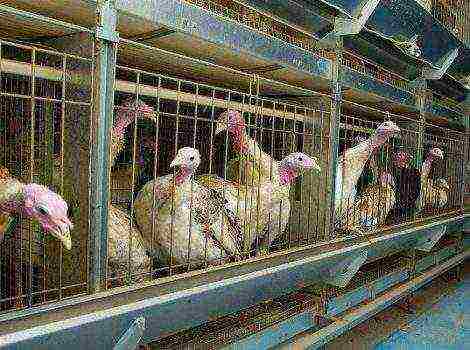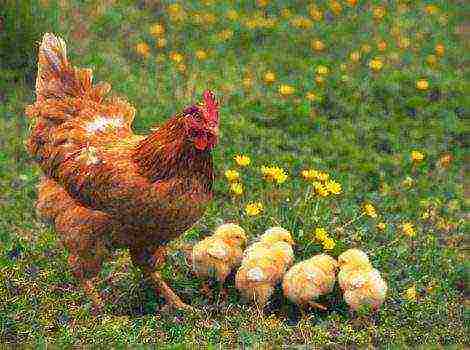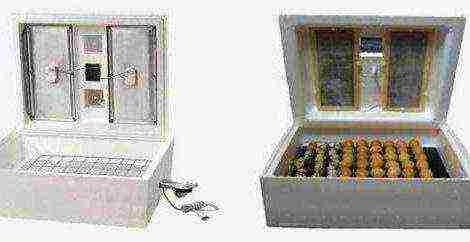Content
- 1 Correct rearing of chickens at home
- 1.1 How to choose chicks when buying?
- 1.2 Is it better to grow with a hen or in an incubator?
- 1.3 Conditions of detention
- 1.4 Food
- 1.5 How to determine the gender of a chicken: chicken or rooster?
- 1.6 Methods for determination in poultry farms
- 1.7 How do you determine your age?
- 1.8 Diseases of chickens
- 1.9 Diarrhea in chickens
- 1.10 Worms
- 1.11 Disease prevention
Correct rearing of chickens at home
Chicken meat, chicken eggs are healthy foods that everyone has on the table. Therefore, raising chickens is not only a profitable business, but also a payback. However, before deciding to start breeding chickens, it is still worthwhile to study in detail all the nuances of breeding chickens, keeping and growing.
In this article we will talk about raising chickens at home for beginners, learn how to raise chickens, why chickens vilify, what to give broilers for diarrhea and other pressing issues.
How to choose chicks when buying?
Raising chickens from an incubator at home is a profitable business, because in addition to meat and eggs, bird feathers and manure can be successfully used as an organic fertilizer. But in order for this business to be beneficial, it is necessary to choose the right chickens.
The best time to buy chickens is April-May.... It is advisable to purchase day old chicks. It is better to buy chicks at poultry farms, because in these places there are guarantees that the individuals are healthy and strong. However, in order to choose chickens, you need to know the nuances of selection depending on the age of the individuals.
Daily
In order not to be mistaken and to acquire healthy day old chicks during the purchase, you need to pay attention to a number of criteria for the appearance of young individuals:
- The chick must be dryhealthy and active;
- The down should not be sticky. In appearance, he must be fluffy, free from dirt and foreign debris;
- At the day-old calves at the time of sale the umbilical cord must be overgrown;
- Be sure to carefully examine the umbilical cord. If there are secretions on it, then this young growth is not worth buying. Discharge is the first sign of an infectious disease;
- The cloaca must be clean, pink in color with a moist texture. There should be no dirt, traces of droppings on it;
- The chicks should have reaction to sounds;
- The back should be straight;
- The head should be straight;
- Smooth and correct beak with a pigmented structure.
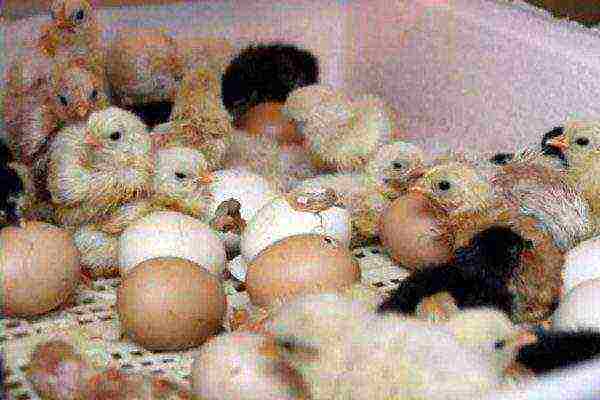
Weekly
Sometimes poultry farmers buy one week old chicks to save money and time. However, this is not always the correct and correct decision. Young individuals at this age are susceptible to diseases. In addition, their body is weak and weak.
But if you do decide to purchase weekly chickens, you should consider the following selection criteria:
- Individuals must be active and healthy;
- The plumage should be fluffy without dirt, traces of droppings;
- The abdomen should be soft to the touch;
- The head is straight, proportional;
- The beak is straight with a pigmented structure;
- Good response to sounds;
- Should already be worked out pecking reflex;
- The wings should be tightly attached to the body;
- The cloaca should be clean, pink and free from dirt and secretions.
Monthly
Chicks one month old are rarely purchased for divorce. Still, some farmers believe that during this period, individuals survive better and they have developed immunity to infectious diseases... Perhaps this is so, but you should not trust this criterion. Sometimes monthly individuals get sick much more often.
In any case, the criteria for choosing monthly chicks are the same:
- Activity and mobility;
- Good reaction to sounds;
- Plumage - fluffy, without dirt, droppings, with a smooth structure;
- The abdomen should have a soft texture to the touch;
- The head should be level and proportional;
- The beak should have an even outline with a pigmented structure;
- The chicks should already have a well-developed pecking reflex;
- It is worth paying attention to the wings, they should be tightly pressed to the body;
- The cloaca should be clean, pink, and free from droppings and secretions.
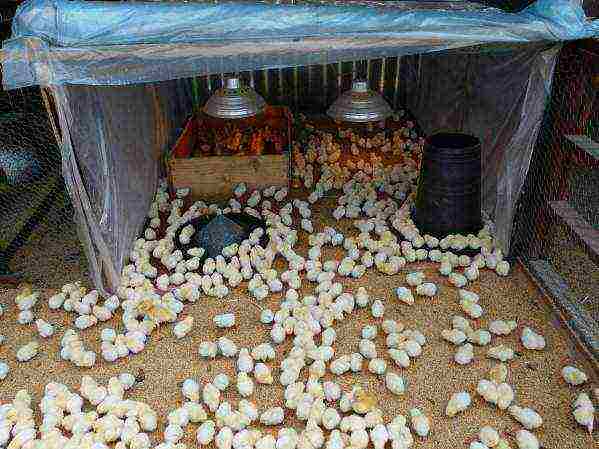
Is it better to grow with a hen or in an incubator?
Features of hatching chickens with a hen for beginners
How to grow a chicken from an egg at home without an incubator? Some experienced farmers prefer hatching eggs under a hen because it is a natural process.
But do not immediately lay eggs under it, it is advisable to observe the behavior of the individual for a while... It is necessary to let the chicken sit. A ready-made chicken for incubation, when pulled out of the nest, emits bubbling sounds and is torn with all its might back to incubation in the nest. In this case, raising day-old chicks at home will be quite economical.
Depending on the weight of the individual, 11 to 21 eggs are laid under it. The incubation area must be separated from the rest of the chickens. You can use a separate cage for the nesting site, or place the nest in a dark corner of the chicken coop.
Be sure to feed the henso that she does not die of hunger and exhaustion, which often happens. It is necessary to forcefully remove the chicken from the nest and feed and water it 2 times a day.
Chicks with a hen hatch in 20-21 days. Sometimes there are cases when a brood hen, without waiting for complete hatching, can throw the remaining eggs and go for a walk with the already hatched individuals. Therefore, to prevent these unpleasant problems, those individuals that have already hatched are placed in a box or in a warm place, a lamp is first installed above them. On the 22nd-23rd day, the family unites.
Pros:
- Natural process;
- High survival rate;
- Chicks from the moment of hatching and in the subsequent period are together with the hen;
- Economical. This method will require fairly low financial costs.
Minuses:
- Long process;
- Low number of hatching chicks per season;
- There is a likelihood of pecking eggs by a brood hen during incubation;
- Chicks can be hatched in this way only once a season and only in warm weather.

Features of raising chickens in an incubator at home and feeding them
Breeding chickens using an incubator is in great demand, and this is evidenced by the advantages of growing chickens after an incubator, among which the main ones should be highlighted:
- Beneficial use. In one season, the incubator is used up to 10 times;
- Simple use... This device is easy to handle, does not need to be fed, watered, and there is no need to worry that the brood hen will peck the eggs;
- You can lay from 50 eggs and more at a time;
- Breeding chicks all year round... These devices provide all the functions that provide output in winter and summer.
Depending on the function, incubators are mechanical, manual and automatic.
In a manual incubator, each egg is turned manually... The use of a mechanical incubator is almost the same as that of a hand held device. However, in this type of incubator, turning is carried out not for one egg, but all at once. In addition, compliance with humidity and temperature control in both types of devices lies entirely with the owner.
But devices with automatic turning of eggs greatly simplify the life of the farmer, because they have a digital thermostat installed in them. During the laying of eggs, it is required to set a certain temperature, and it remains stable during the subsequent incubation period.
If the temperature regime rises or falls sharply, then the mechanism makes a sharp sound... In addition, the eggs are turned every hour, which prevents the embryo from sticking to the shell, and increases the percentage of chick survival. However, these devices are expensive. But this is the only way you can raise healthy chickens.
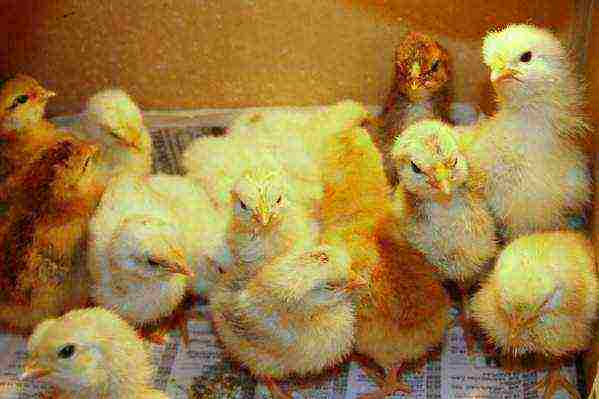
Conditions of detention
Premises
Keeping chickens out of the hatchery at home is easy. Remember a few rules for caring for a chicken house:
- An important condition of the room is cleanliness. Be sure to clean up the place where the chicks are kept every day, remove garbage, uneaten food. Otherwise, infections can quickly appear in an uncleaned room;
- If litter is available in the house, it is regularly changed. It must always be clean and dry;
- It is not advisable that a large number of poultry be present in the place of detention. It is important to provide young animals with free space so that they can walk freely, run, fully exercise all motor functions;
- Number of livestock keeping directly depends on the area of the place for keeping chicks.
Light
The second important condition for keeping chicks is light. The length of daylight hours depends on the age of the young.
From the first days of a chicken's life, it is necessary to maintain the duration of daylight hours at least 18 hours... This is then reduced to 10 hours before the chicks reach 4 months of age.
These indicators do not depend on the type of chicken breed. In addition, it does not matter what the poultry is grown for - for eggs or meat, this indicator should remain unchanged. The duration of daylight hours in winter can be maintained by the presence of additional lighting in the room where the individuals are kept.
You may also be interested in the following articles on the topic of growing chickens:
- How to use the Nasedka incubator?
- How to treat infectious and other diseases of chickens?
- How to properly feed laying hens at home?
Temperature for breeding healthy individuals
Temperature parameters depend on the age of the bird:
- For diurnal individuals up to 5 days of age, a suitable temperature regime in the room is considered to be up to +32 degrees Celsius;
- With the onset of 6 days of life and up to 9 days, the temperature gradually decreases to +28 degrees Celsius;
- From day 10 to day 20, the temperature regime is reduced by another 3 degrees +25 degrees Celsius;
- In the subsequent period, the temperature should be maintained from +20 degrees to 24 degrees Celsius.
Food
What to give in the first days of life
Chick feeding should be started immediately after hatching.... But still, it is worth waiting for a while for them to dry out, to get a little stronger.
A small amount of corn grits should be poured into a feeder with a flat base or simply on the bottom of the box. This cereal has a fine structure, so this food will be most suitable for newborn chicks.
Feeding day old chicks
The diet of diurnal individuals, in contrast to newly hatched chicks, is already more varied. In addition to corn grits, individuals can be given other types of feed:
- Semolina;
- Barley groats;
- Millet;
- Ground oat flakes;
- Wheat groats.
The feeding process for day old chicks should be done every two hours.... Feed should be given in small portions. It is advisable not to mix cereals, otherwise some individuals will begin to choose their favorite food and will only eat it. Therefore, it is best to give feed mixtures individually and dry.
For full-fledged growth and development, chicks should be given other components in addition to cereals. For young individuals, cottage cheese is very useful. Thanks to this product, the body of chickens is saturated with nitrogenous substances and calcium. Cottage cheese can be given from 2-3 days after the emergence of chicks in the morning, pre-mixing with cereals.
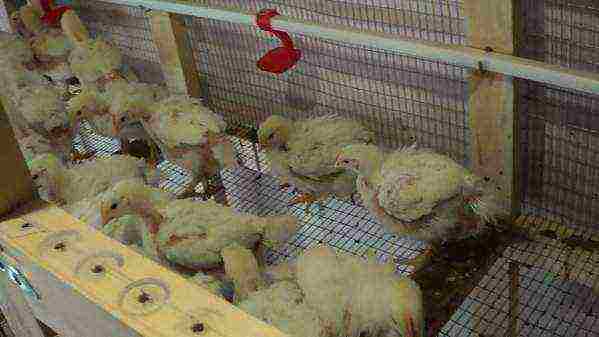
It is worth remembering that dairy products provide high value for babies... Instead of water, whey, liquid kefir can be poured into the drinker. On the third day, individuals can be fed with greens. For food, you can use plantain, clover, dandelion, nettle, biting. On the 5th day, green onions should be introduced. Green onions have a beneficial effect - they provide high protection for the body against various intestinal diseases.
Weekly
Individuals of one week of age can already begin to give a mixture of corn, barley, oat and wheat groats. The cereals are mixed in equal proportions - 1: 1.
Additionally, chopped herbs and dairy products can be added to the mixture. During this period, individuals can already be fed less often, but portions should be large. Up to 4-5 feedings should be received per day.
Period
From a month or more, chicks are released outside for walking. For this reason, the diet during this period is green. Through the use of herbs and other greens, individuals receive the vitamins necessary for their growing body.
Besides coarsely ground grain is introduced into the diet of individual layers... From a month and a half, adults should eat whole grains. You can give meat and bone meal and food waste.
How to determine the gender of a chicken: chicken or rooster?
In the egg
How to identify a chicken from a rooster in an egg? Not many poultry farmers will be satisfied when, after hatching, the percentage of males will be almost 80-90%. Therefore, in these cases, the method of determining the sex of a cock or a chicken by egg is used. It would seem that this task is difficult and almost impossible, but this is far from the case.
To determine the sex of the egg, recommendations will help:
- First you need take an egg in your right hand, while the sharp end of the egg should be directed upwards;
- Further run your left finger along the top of it;
- If a ring and tubercles are observed at the upper end, then these criteria indicate that a cockerel will appear. If the top of the egg has a smooth structure - a chicken.
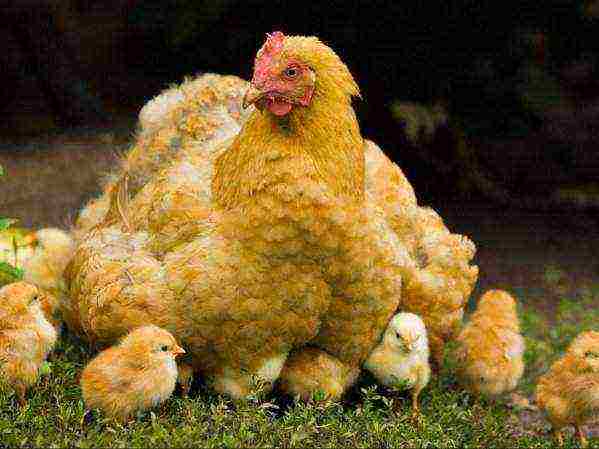
At day-old
How to distinguish a chicken from a cockerel at one day of age? At one day of age, sexual characteristics do not appear at all clearly, so it is quite difficult to determine the sex. Females usually have more luxuriant plumage., but males, on the contrary, are scarce, in some places they can be without fluff.
At 2 months
How to tell a rooster from a chicken at 2 months old? At this age, gender can be determined using several methods:
- By plumage... Individuals with abundant plumage are females, and those with poor plumage are males;
- By this age, the cockerels have a comb, the beard turns red, and the face is rounded;
- In cockerels, legs become longer, spurs can already be seen on them;
- In males, overgrown plaits appear on the tail.
At 3 and 4 months
How to distinguish a rooster from a chicken at 3 or 4 months At the age of 3 months, sex determination of individuals is much easier, in roosters you can see the following external characteristics:
- The scallop becomes bright in color;
- The crest, beard and earrings become large;
- The legs become high;
- Spurs are already clearly visible on the legs;
- The tail has long braids.
Methods for determination in poultry farms
In addition to traditional methods for determining the sex of chickens, there are other methods that are usually used in poultry farms. These methods help to determine the gender with the greatest probability.
Cytogenetic way
How can a cockerel be distinguished from a chicken by this method? This method is based on the determination of the age by the karyotype of the fast-acting cells of the feather pulp. Usually in males who are not even a month old, the Z chromosome acts as the longest metacentric.
In females, the number of these chromosomes is 10 times less; W-chromosomes - submetacentric - predominate in their bodies. If, during the analysis, it is found that the Z-chromosome is present in the body in a single copy, then this is a chicken, if there are a lot of these chromosomes, then it means a cockerel.
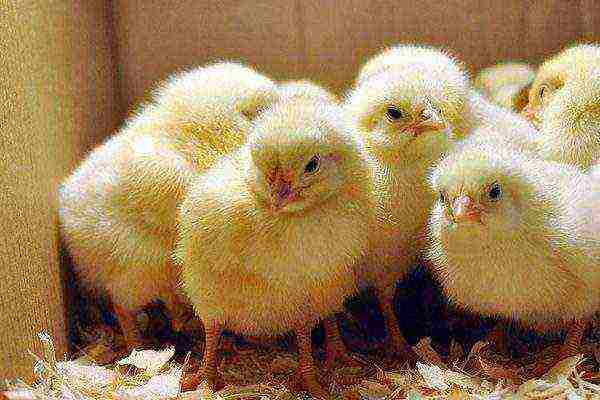
DNA
This method, how to distinguish chickens from females, allows you to determine the sex of the chicks with the greatest probability. It is based on blot hybridization of blood DNA with a primer.
The juvenile can be identified with high accuracy using the analysis of samples or whole blood, washed erythrocytes. The disadvantages of this method include high cost and labor intensity.
On the wings
Determining gender using this method:
- The first way is inspecting the color of the wings... At the age of 2-3 days, the wings of the chicks are examined - in males they are slightly lighter than in females;
- The second way is in counting feathers... It is necessary to pull the wing of the chick and spread it. Chickens fledge first, for this reason 6-7 primary feathers are large in size, unlike others. But males have all the same feathers.
To size
The sex of the chicks is determined depending on their size. Typically, a high-precision balance is used for this method. If an individual has a large enough mass for its age, then it is a cockerel. If the mass is small, then this is a female. Usually the difference in weight is about 5 grams.
On the topic of growing chickens, also read the following articles:
- What if the chickens are not laying?
- How to use the “Laying” incubator?
- How to recognize and treat broiler diseases at home?
How to tell the sex of a hen by color?
Determination of sex by color of plumage is mainly used for purebred individuals:
- Running shoes... At about the age of 1 day, sexual characteristics are determined: beige is typical for females, and white for males;
- Autosex breeds... Chickens have monochromatic colors - gray, white, black, and males have stripes;
- Brahmas... Females have distinct stripes on the back and points on the head. Males also have stripes and dots, but they are slightly blurred;
- Rhode Island and New Hampshire breeds. On the second day after hatching, dark spots and stripes can be seen on the head of females; males do not have these characteristics;
- Adler silver. Females are yellow in color, and males are lemon with a black stripe on their heads.
Japanese method
Before you start sex determination using this method, you should understand the structure of the chicks' genitals and find out their differences.
Males can be separated from females by detecting a tubercle in the anus, which is absent in future chickens:
- First of all, the chick's cloaca is cleaned of traces of droppings;
- Next, the individual should be taken in the palm of your hand, turned over, paws apart so that the cloaca is clearly visible;
- The hole must be pushed apart, at the same time you need to press on the abdomen. As a result of these manipulations, the internal structure of the cloaca will be clearly visible.
External differences between the cloaca of females and males:
- In females, the cloaca looks like a neat nodule without bulges;
- In males, a genital tubercle is quite often found.
To avoid unpleasant consequences, this method should only be carried out by an experienced poultry breeder or farmer.
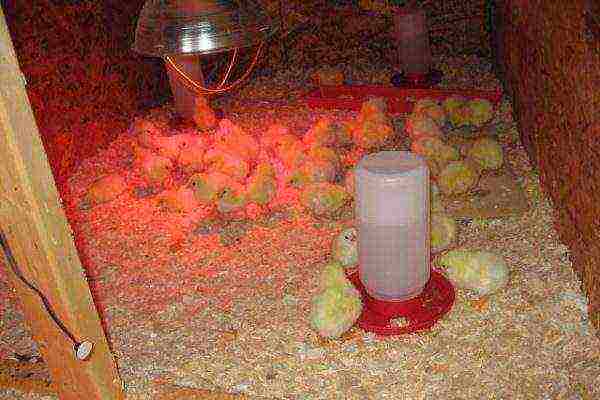
Reflex
how to distinguish chicks by sex using this method? This gender determination method is performed in two ways:
- You should take the chick by the scruff of the neck and look behind the legs for a while. Usually chickens are trying to curl their legs, and clench the claws. At the same time, it raises the paws a little. And the bettas, on the contrary, do not twist their legs, and do not move them, they hang in an even position;
- You can, on the contrary, take the chick by the legs and look behind the position of the head. Chickens usually lift their heads up., and the cockerels, on the contrary, hang without moving.
How to distinguish a cock from a chicken by voice?
Usually this method is used by the Orpington and Cochin peoples. The voice of males is the most coarse, similar to a quack. In females, on the contrary, the voice is softer, they mostly squeak. This method does not always allow you to accurately determine the sex characteristics of individuals. It is mainly used by experienced poultry farmers.
How do you determine your age?
Usually the age of chicks is determined by the plumage. It is advisable to remember the features of plumage depending on age:
- Between 8 and 12 days of age, feathering appears in the shoulder area;
- In the period from 12 to 16 days, feathers appear on the crop and breast;
- In chicks of three weeks of age, the first molt is observed, while all the fluff falls out of the tail;
- At the end of the fifth week, flight feathers grow, and feathers appear on the back of the body;
- At six weeks of age, the head and lower body are covered with a feather;
- Full plumage is observed at the age of 3 months.
Diseases of chickens
Chickens, as well as chicks of other bird species, are susceptible to various diseases. The following diseases are most common:
- Avitominosis;
- Poisoning;
- Digestive disorders;
- Salmonellosis;
- Coccidosis;
- Typhus and many others.
In order to properly treat diseases, it is worth knowing what symptoms are characterized by diseases in chickens.
Diarrhea in chickens
Why broilers vilify chickens is sometimes quite difficult to figure out. Below, let's try to figure out and understand all the reasons for this phenomenon.
White diarrhea in broilers: can it be cured?
Quite often, chickens develop white diarrhea. It is also called pullorosis. This disease usually occurs in an acute form and quickly affects the fragile intestines of chickens. The causative agent of this disease is a bacillus called salmonella. The disease usually spreads at a high rate, in a few days almost all birds can get sick.

How to cure diarrhea in chickens? For prophylaxis, you need to clean the room of debris, disinfect everything. It is also imperative to check the room temperature and ventilation.
Yellow diarrhea in broilers: why it occurs and how to treat it?
This diarrhea can occur during infectious diseases, as well as if the conditions of detention are not observed. Sometimes yellow droppings are seen in Gumboro disease. In these cases, an examination, testing is carried out.
Besides yellow diarrhea can result from stress, hypothermia, due to poor quality feed. In these cases, folk remedies are used for treatment and the premises are disinfected.
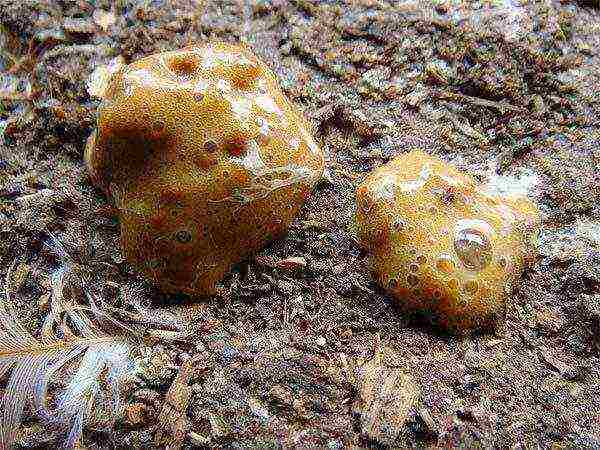
Bloody diarrhea in chickens: a symptom of what diseases?
Bloody diarrhea usually occurs with coccidiosis. This disease is dangerous and often leads to the death of the entire bird population. This disease occurs due to poor hygiene, namely, untimely cleaning of the room. This disease affects the intestines. In addition to diarrhea, the following conditions are observed:
- Loss of appetite;
- Lethargy, inactivity;
- Tousled plumage;
- Impurities of blood and mucus appear in the droppings.
How to treat if chickens have bloody diarrhea? For treatment and prevention, it is necessary to clean and disinfect the room in a timely manner, vaccinate and give the appropriate chemicals.
Light brown diarrhea in broiler chickens and its treatment
Broilers have brown diarrhea with eimeriosis. This disease is caused by various parasitic protozoa that accumulate in the intestines of chickens or hens. Infection usually occurs through food, dirty bedding, gadfly.
Symptoms of the disease:
- Individuals sit in one place with their eyes closed;
- Tousled plumage;
- The wings are hanging to the floor;
- Lack of appetite;
- Brown diarrhea with mucus.
The disease is determined during the study. Treatment is best done at an early stage. For treatment, drugs are used - coccidiostatics.

Chickens vilify green
Green diarrhea can occur with pasteurellosis disease. In this case, examinations, analyzes are carried out. If the diagnosis is confirmed, then appropriate treatment is prescribed.
In the absence of pasteurellosis, green diarrhea can cause poor-quality expired feed. In this case, the treatment is carried out using adsorbing agents (activated carbon). Suspicious feed must be disposed of and only high quality feed provided.

Worms
Chickens often have such an unpleasant disease as helminthiasis. This condition poses a particular danger, and in almost 50% of cases, if not treated promptly, it leads to death. Signs of worms in chickens are severe emaciation.
What to do if chickens develop worms? In order to save the entire livestock of birds, you need to plant infected chicks in time, clean the room, remove all bedding and disinfect everything. Infected individuals should be given antihelminthic drugs and nutritious food. Medicine for worms in chickens should be given as early as possible.
Disease prevention
Preventive measures for various diseases of chickens include the following recommendations:
- Timely cleaning and disinfection of the premises saline solutions, caustic soda, bleach;
- Compliance with the density of livestock in the poultry house. It is desirable that the number of chicks in one room be moderate;
- Quality feed with a high nutrient content;
- It is imperative to equip the ventilation of the room;
- Compliance with the temperature regime of the room;
- Soldering birds with drugs against infectious diseases;
- Timely vaccination.
Breeding chickens is a laborious process that requires a lot of responsibility. In order for the livestock to be healthy, it is imperative to follow all the rules of keeping. The main condition for the full growth and development of chicks is care and attention!
Now you know how to raise chickens at home, how to treat chickens, what to do if chickens develop worms, and how to treat diarrhea in chickens and adults. Follow all recommendations and watch out for chicks.
And a video on how to feed chickens:
